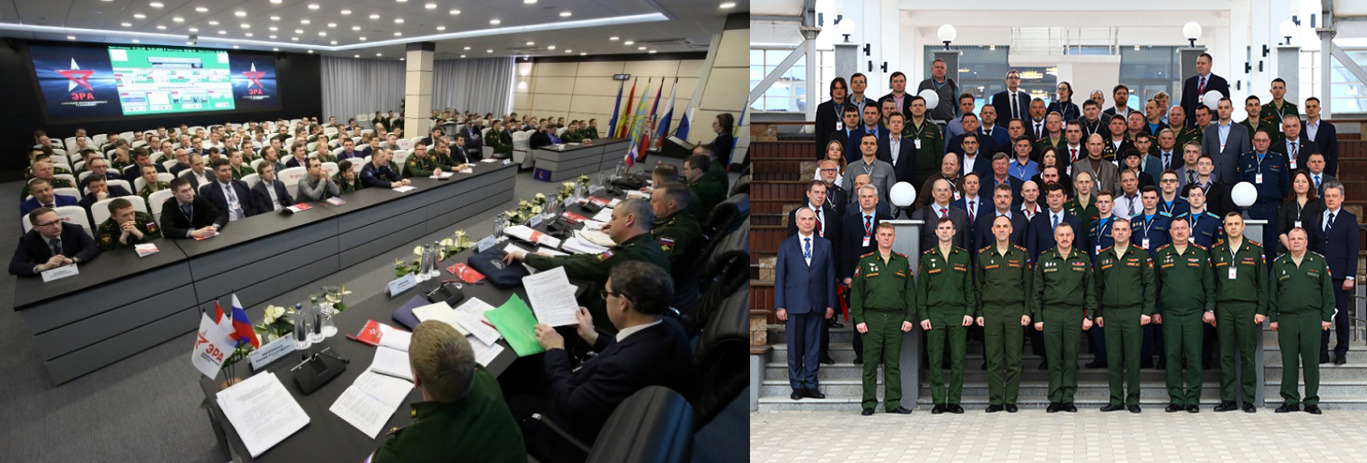News

The summer school-conference "Cryptography and information security" is a traditional event held at NSU every year. The organizers are the Cryptographic center (Novosibirsk), the cryptography laboratory JetBrains Research, the international mathematical Center in Akademgorodok, the organizers of the international Olympiad NSUCRYPTO, the Faculty of information technology and the faculty of Mechanics and mathematics of NSU.
Dates: July 9-27, 2020. Venue: remote format. Students, school leavers, and 11th grade students are invited to participate in the school conference. About 15 teachers will work with the participants for three weeks. You will find lectures, team and individual work in projects related to solving research problems in the field of cryptography and information security, sports classes. One of the most important events of the school-conference is a round table on modern problems of cryptography. The project topics are related to various issues of modern cryptography and information security: from the development of modern methods of cryptanalysis, construction of ciphers, quantum cryptography to the creation of open-source analytical intelligence systems. In 2020, as part of the summer school-conference, teachers from Russia, Europe and the United States, including authors of international standards in the field of cryptography, will work with participants. Part of the school-conference will be held in English. Participation in the school is free of charge. The number of seats is limited. According to the results of the reporting conference-competition, the winners are awarded diplomas, and the participants are issued a certificate. The winning students are awarded a scholarship from JetBrains when they provide an original certificate from the University. Applications for participation are accepted until June 30, inclusive.We invite students to take part in research!
And we draw your attention to the projects on cryptography and information security-number 19, 20, 21. Participation in these projects is perfectly combined with the Summer school on cryptography and information security! To do this, register for both events (school and workshop).
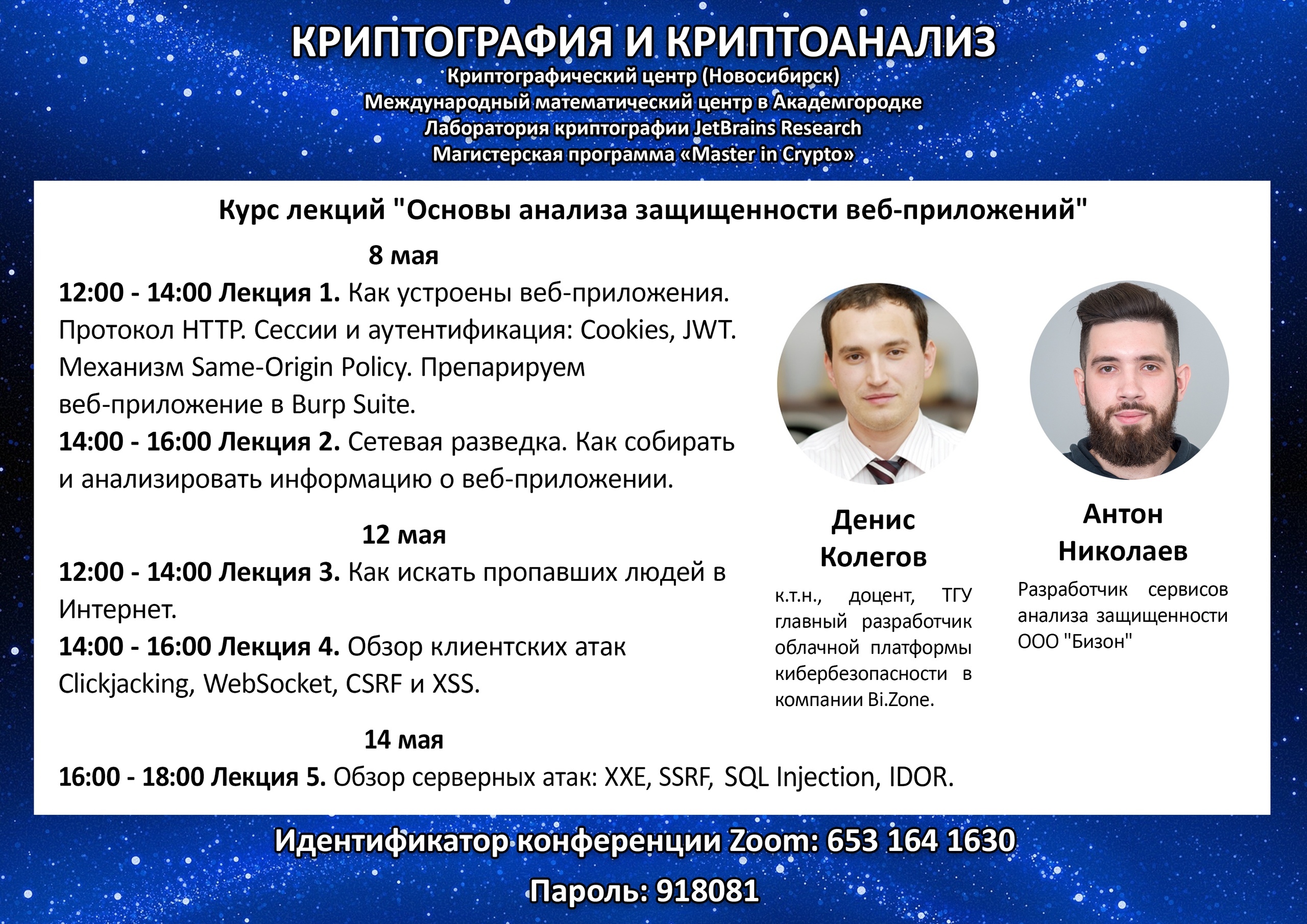
.
This year it was online for the first time. The winners are:
Section "Information Technologies". Subsection "Information Security"
🍀Elena Zavalishina (I degree diploma) "Cryptanalysis of the basic version of a public key cryptographic system based on the complexity of solving the system of polynomial equations in integers"
🍀 Daria Zyubina (II degree diploma) "Cryptographic properties of an S-block constructed on the basis of a Boolean function and permutation"
🍀 Dmitry Bader (III degree diploma) "Development of methods for analyzing blockchain networks"
Section "Mathematics". Subsection "Theoretical Cybernetics"
🍀Alexander Shaporenko (III degree dimploma) "Connection of quaternary and Boolean bent functions"
Congratulations! Scientific and creative success!
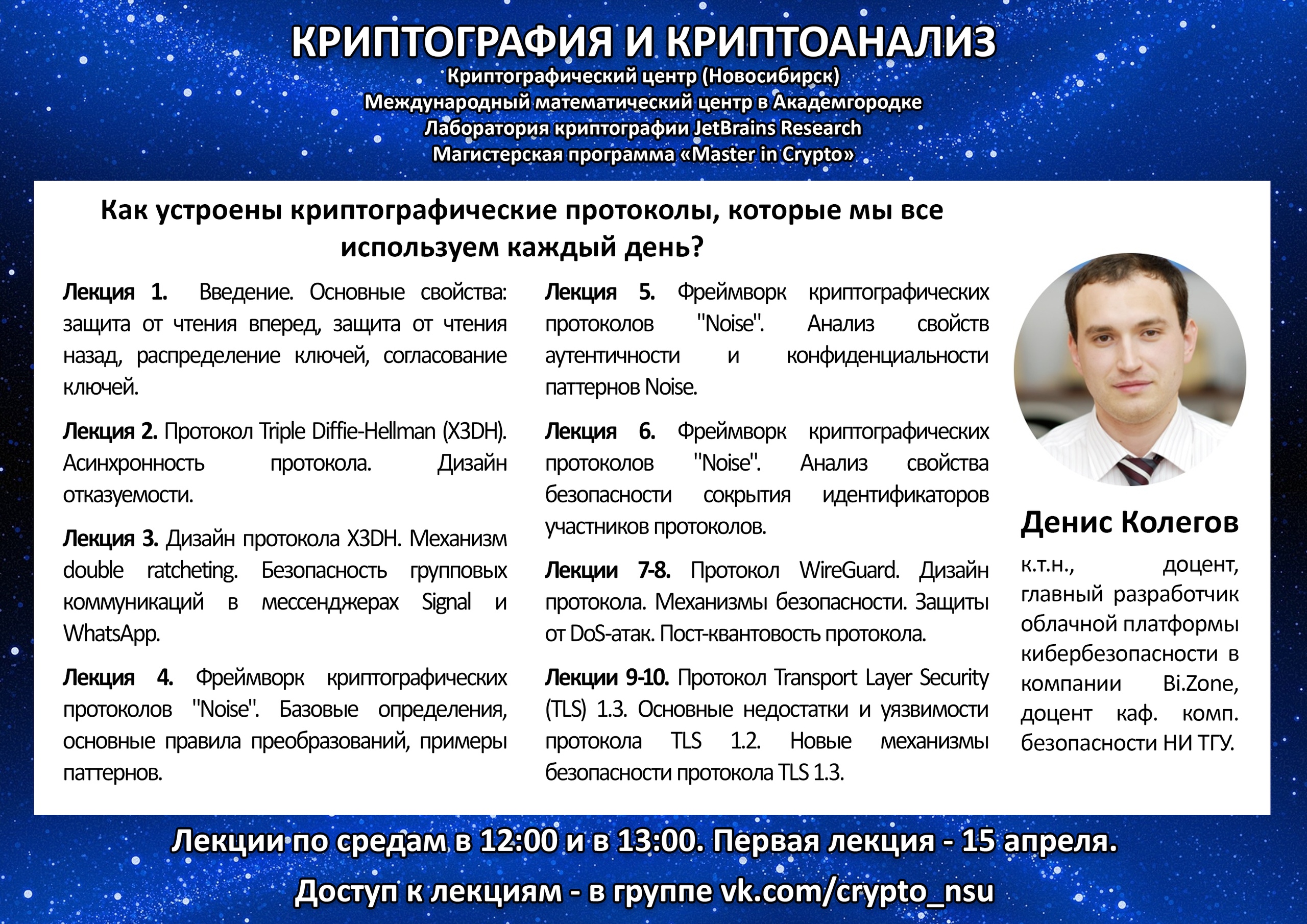
Lectures will be held online on Wednesdays at 12:00 and 13:00. The first lectures will be held on April 15. Information for access to lectures will be published here in the near future.
We invite students and teachers!
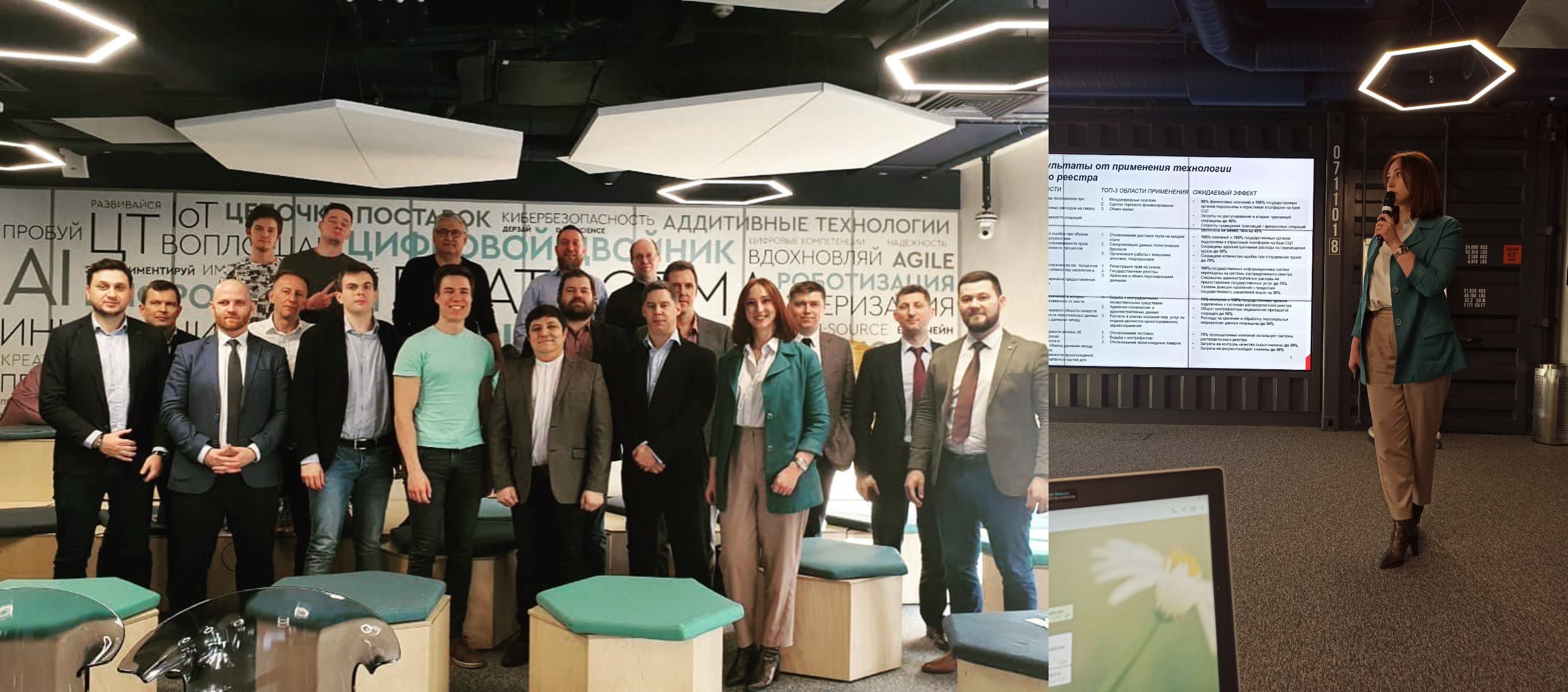
Many companies are actively interested in practical applications of blockchain technologies and scientific results in this area. At the meeting on February 27, held at the Gazprom Neft Innovation House (Saint Petersburg), Polina Sazonova was an invited speaker from Novosibirsk. She presented the report "distributed registry Technologies as the basis of the Russian economy". The meeting discussed the results in the field of blockchain technologies and their implementation with the participation of representatives of the Russian Post, Sberbank, Sibintek, Norilsk Nickel, Innopolis University and other organizations. At the round table organized after the presentations, participants discussed the prospects for the development of blockchain technology and existing barriers to its application.
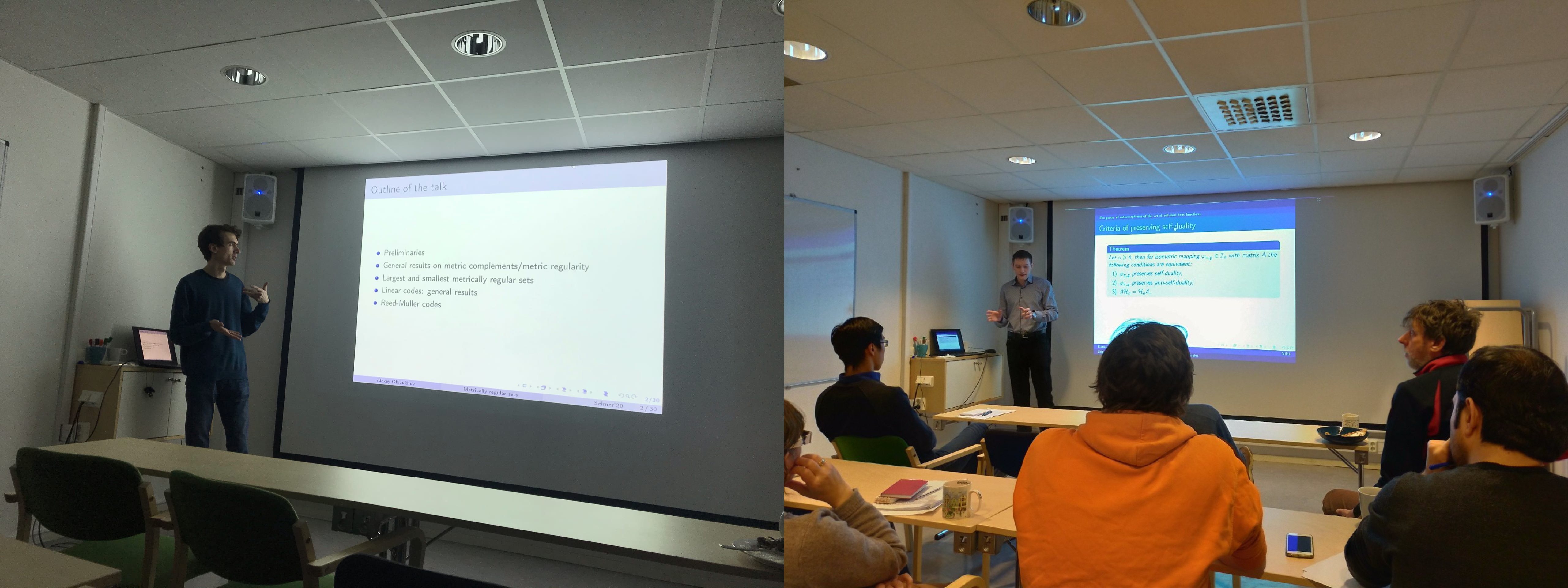
From February 3 to March 1, 2020, Alexander Kutsenko and Alexey Oblaukhov trained at the Selmer Center in Secure Communication research center Of the University of Bergen (Norway). During this time, joint research was carried out, and three times spoke at the laboratory's seminar:
13.02.2020-A. Kutsenko, "Self-dual bent functions: characterization and metric properties". Known properties of self-dual bent functions are considered. The obtained metric properties are described: the minimum Hamming distance between self-dual bent functions, and the spectrum of Hamming distances between functions from the Mayoran-Macfarland class. The metric regularity is proved and the metric complement of the set of self-dual bent functions is found.
20.02.2020-A. Kutsenko, "The group of automorphisms of the set of self-dual bent functions". The results obtained for isometric mappings of a set of self-dual benp functions are presented. It is proved that the automorphism groups of sets of self-dual and anti-self-dual bent functions coincide. The group of automorphisms of the set of self-dual bent functions is fully described.
27.02.2020 - A. Oblaukhov, "Metric regularity and metric complements in the Boolean cube". We present the results obtained that affect the properties of metric additions of subsets of a Boolean cube. A General view of the metric complement of a linear subspace of a Boolean cube is found. A lower estimate for the power of the maximum metrically regular set is obtained. The metric regularity of the reed-Maller codes RM(k, m) is proved for the case k>=m−3.
More about the course is here.

